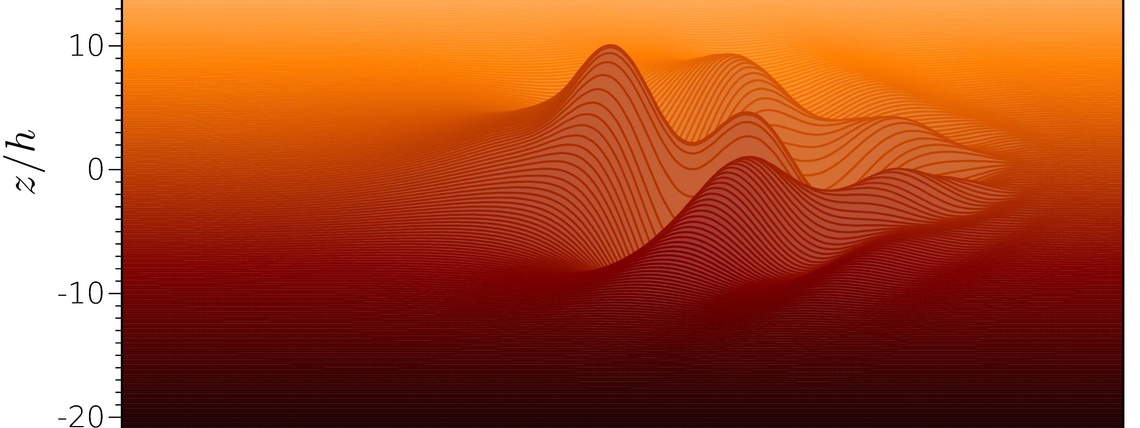The articles of the current edition are available on the new site.

We are all immersed in waves and we produce them ourselves: whether they be electromagnetic or acoustic, they can be thought of as a large net. Meshes of different dimensions expand to different sizes, which connect the world and allow the transport of information. The research of Prof. Daniela Tordella of the Department of Applied Science and Technology of the Politecnico di Torino, in collaboration with Federico Fraternale, post-doc at Politecnico di Torino, focuses on waves defined as “internal”, that is, those propagating inside fluids, such as air or water or even the interstellar medium.
The research, conducted through analytical steps and numerical calculations, has focused on enstrophy: it is the intensity of the wave’s vorticity in a fluid. Already Leonardo Da Vinci, observing a river from the top of a bridge noticed that inside water, vortex waves are created, which are visible also to the naked eye. Initially, in order to describe this state, mainly the kinetic energy was taken into account: the research has proven that when the kinetic energy of a wave grows, the increase of vorticity is not always observed. However, the vorticity has to be amplified so that the flow changes its state and becomes turbulent. The enstrophy is therefore the main characteristics to understand the steps from the first ripples, like those of a stone thrown into a lake, to the turbulence in fluids. The study was published in the journal Physical Review E, signed by Daniela Tordella, Federico Fraternale, Loris Domenicale, writing his thesis at that moment and Gigliola Staffilani, the Professor of Mathematics at Massachusetts Institute of Technology.
These phenomena are now theoretically proven and could lead to potential applications in various fields, from geophysics to oceanography and atmospheric physics. The study of enstrophy takes into account the “container” hosting the fluid and where the waves propagate, which could be sea basin, or simply a kitchen sink. This can lead for example to the improvement of the understanding of perturbations in the atmosphere or of the propagation of deep waves in oceans, which could cause tsunamis, or of the turbulent transport inside oil pipelines.